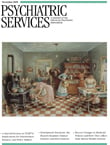A swirl of controversy has surrounded the upcoming fifth edition of the Diagnostic and Statistical Manual of Mental Disorders
( DSM
) ( 1, 2, 3 ). Unfortunately, less consideration has been paid to the substantive work involved in enhancing the utility of the
DSM for clinical and research diagnostic purposes (
4 ). Critics of the
DSM have called attention to the limitations of categorical diagnoses based on symptom counts, a method that does not fully take into account symptom severity and quality-of-life issues. For example, is an individual who meets diagnostic criteria for a major depressive episode with five of the nine symptom criteria considerably different from someone who falls just short of the cutoff for a depressive episode by meeting only four of nine criteria? Many argue that symptom counts alone do not help clinicians understand the scope of a diagnosis. The contributions in this volume shed light on this important area of inquiry of adding a dimensional approach to the diagnostic taxonomy.
The book is a compilation of articles first published in a supplement to the International Journal of Methods in Psychiatric Research and based on a National Institutes of Health (NIH) -funded July 2006 conference, Dimensional Approaches to Diagnostic Classification: A Critical Appraisal. The conference was organized by the American Psychiatric Association, World Health Organization, and NIH. The editors hoped that the articles would spark debate and generate interest in developing ways to combine categorical and dimensional approaches to psychiatric diagnosis.
Overall, the collection of articles is well organized and includes a useful organizing chapter on DSM categories and dimensions, which summarizes the limitations of the current categorical approach to psychiatric diagnosis and the scientific merits of adding a dimensional component. This chapter provides a framework for the subsequent chapters but is most applicable for professionals with some knowledge of epidemiology and statistics. Other chapters focus on the potential utility of adding dimensional components in the diagnosis of substance dependence, major depressive episode, psychosis, anxiety disorders, personality disorders, and developmental psychopathology.
The concluding chapter on dimensional options for DSM-V is the most thought provoking, providing recommendations and outlining the challenges of incorporating a dimensional approach in the next iteration of the DSM. Adding a quantitative, dimensional approach is not necessarily a novel method, as noted by the editors. Clinical researchers, for example, often use standardized instruments to assess severity and response to treatment interventions. Similarly, clinicians also want to know how well their patients are responding to treatments. A dimensional component would add to the utility of the diagnostic process by solidifying the approach many clinicians and researchers are already following. The challenge will be to find a way to add a dimensional element to the psychiatric classification scheme that does not burden either clinician or respondent but yields a richer diagnosis and understanding of the patient. Overall, Psychiatric Services readers will find that this book provides direction for the future and describes how substantive changes to the DSM may shape both clinical treatment and research.
The reviewer reports no competing interests.

